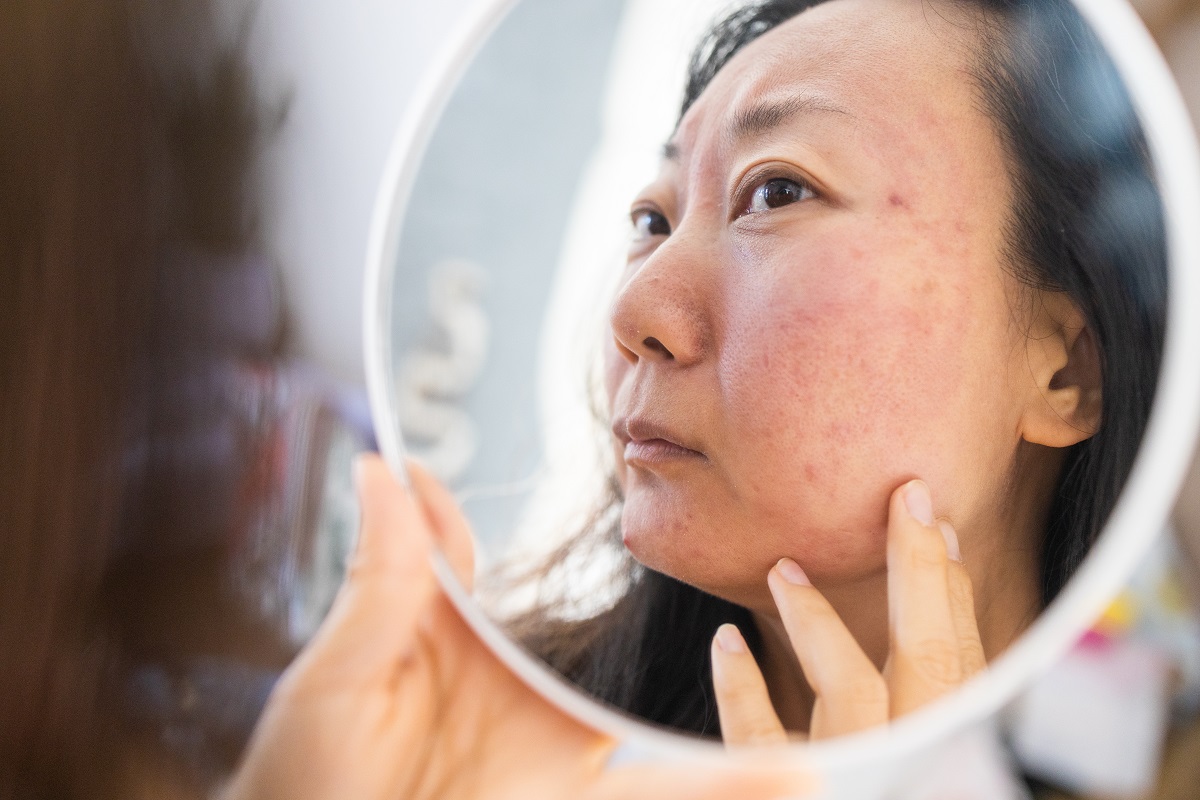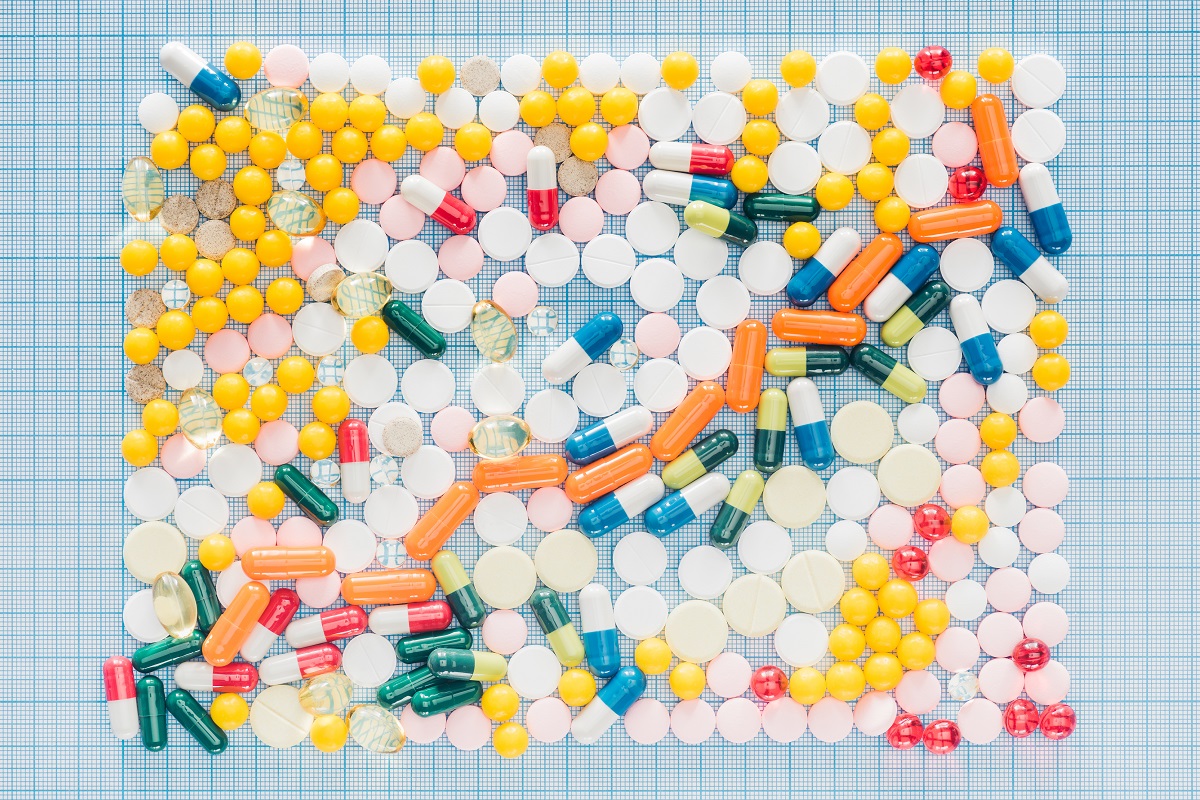This is a skin disease that provokes flushing and long-term redness on the face. It is known as rosacea and it can also widen blood vessels and cause small and pus-filled bumps. Rosacea symptoms usually come and go. In other words, a person can experience symptoms for weeks or months and then they disappear for a while.
Many times, rosacea is misdiagnosed as acne, dermatitis, or other skin diseases. Unfortunately, there is no way to cure this skin condition but with proper treatment, you can control the symptoms and improve the quality of life. Treatment usually includes regular skin care, medications, and avoiding the things that trigger the symptoms.
Symptoms
- Facial flushing and redness – This is often the primary rosacea symptom. If you do not manage this symptom, over time the face can remain red.
- Visible veins – This condition can cause small blood vessels from your nose and cheeks to break and widen. These large veins are also known as spider veins and sometimes they can be hard to see because it depends on the skin color.
- Swollen bumps – There are many patients who develop pimples on the face, chest, and back. Sometimes, they are filled with pus.
- Burning sensation – Commonly, the affected skin may feel tender and hot.
- Eye disorders – This symptom also occurs commonly in people with rosacea. It causes dry, swollen, and irritated eyelids and eyes (also known as ocular rosacea).
- Enlarged nose – If you are experiencing this condition for long periods, it may lead to thickening of the nose skin. As a result, it may lead to a condition called rhinophyma. This nose problem occurs more in men and people assigned to male at birth (AMAB) than women or people assigned to female at birth (AFAB).
It is recommended to see a doctor immediately if any of the previous symptoms happen.
Causes
While the exact rosacea cause is not known, healthcare providers think there is a combination of factors that lead to this skin problem. These include genetics, overactive body defense (immune system), and other environmental factors. In any case, this skin disease cannot spread from one person to another and it is not an outcome of poor hygiene. Commonly, the symptoms are triggered by the following factors. Check below some of them:
- Very cold or hot temperatures
- Emotional stress
- Spicy foods
- Alcohol
- Sun or wind
- Hot drinks
- Exercise
- Medications that wide blood vessels (such as blood pressure drugs)
- Cosmetics (including skin and hair care products)
However, this article does not contain a complete list of risk factors. Consult with your doctor for more details.
Risk Factors
This condition can affect anyone and the following factors could elevate your risk of getting it. Examples include:
- Family history of rosacea
- History of smoking
- People who are aged between 30-50 years old
- The skin burns easily in the sun
Diagnosis
Doctors usually diagnose this skin disease by asking you questions about symptoms and medical and family history. They can also perform several tests to exclude other health conditions that provoke similar symptoms to those that appear in patients with rosacea. For instance, lupus or psoriasis also can provoke the symptoms listed above. In some cases, it is challenging to identify the skin symptoms because of brown or black skin. In such cases, doctors will check you for spider veins, flushing, swelling, bumps, and others.
Treatment
If you do not notice any improvement with the home remedies listed below, you may need to see a doctor for a prescription. Physicians commonly recommend prescription creams and gels. These medications are quite effective and help to lessen the symptoms. In case you experience a severe rosacea form, you may need more advanced treatment options. For example prescription medications and laser treatment.
The duration of the treatment fluctuates among patients. It depends on the severity of the condition, how long you experience this skin condition, and other factors. Sometimes, the symptoms may return even if the medications help calm the skin.
Medications
There are different medications prescribed for rosacea. While some of them are used to lessen flushing others are effective for pimples and bumps. Usually, it takes time to find the best medicine for you. Check below some of them:
- Gels – Physicians usually prescribe this medicine for people with mild to moderate rosacea who have flushing. These include Brimonidine and Oxymetazoline. Using previous medications can help to constrict blood vessels and decrease flushing. Usually, the effect is noticed within 12 hours after use. In any case, misuse of Brimonidine and Oxymetazoline can worsen flushing over time. That’s why it is advised to use them before important events only. Moreover, Azelaic acid, Metronidazole, and Ivermectin are usually prescribed for pimples of mild rosacea.
- Oral antibiotics – Physicians can prescribe oral Doxycycline in severe cases of rosacea.
- Oral acne medicine – In case you experience severe symptoms and other treatment methods do not work, you may get a prescription for Isotretinoin. This is a potent medicine that helps against acne. However, you should not administer this medicine during pregnancy because it may provoke birth defects.
Laser Treatment
This treatment option is usually used in more serious rosacea cases and it helps to improve enlarged blood vessels. This procedure also is effective for long-term redness of this skin disease. Furthermore, it is considered one of the most effective treatment options for spider veins, especially in people with skin that is not tanned, brown, or black.
The most common adverse reactions after laser treatment include redness, bruising, and mild swelling for several days. Blistering and scarring also can happen but quite rarely. However, those who have brown or black skin may experience a permanent or long-term skin color change in the treated regions. In addition, to maintain a good skin look, usually is needed to perform this procedure regularly.
Home Remedies
The following tips can help to prevent flare-ups and improve the symptoms. Examples include:
- It is advised to determine and avoid factors that trigger the symptoms.
- You should regularly protect your face by using broad-spectrum sunscreen or moisturizer that contains sunscreen with SPF 30 or higher. In case you are swimming or sweating, it is recommended to reapply it.
- Avoid rubbing and touching the face too frequently because it will help to improve the symptoms (such as redness). It is advised to choose moisturizing products that do not contain alcohol, camphor, area, and menthol.
- Additionally, there are some makeup products that can help with face flushing that commonly appear in people with rosacea. For instance, green-tinted makeup usually helps cover the red color of the face.
Frequently Asked Questions
What is the most effective treatment for rosacea?
Most people notice significant improvements in rosacea symptoms with a topical medication that contains Sulfacetamide sodium (sulfur). Moreover, this medicine is available in different forms including creams, gels, and cleansers.
What are the most common rosacea symptoms triggers?
Usually, people with this skin problem experience symptoms due to sunlight and hairspray. However, other triggers include heat, stress, alcohol, and spicy foods.
Can rosacea be cured?
Nowadays, it is not possible to cure this skin disease. But with proper treatment, you can control the symptoms. Ask your healthcare professional if you have any other questions.




